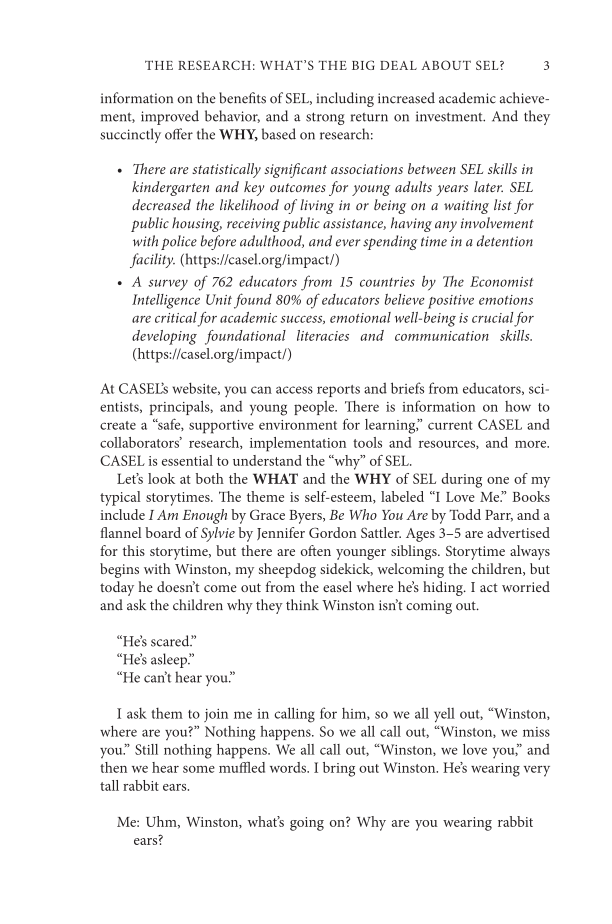THE RESEARCH: WHAT’S THE BIG DEAL ABOUT SEL? 3 information on the benefits of SEL, including increased academic achieve- ment, improved behavior, and a strong return on investment. And they succinctly offer the WHY, based on research: • There are statistically significant associations between SEL skills in kindergarten and key outcomes for young adults years later. SEL decreased the likelihood of living in or being on a waiting list for public housing, receiving public assistance, having any involvement with police before adulthood, and ever spending time in a detention facility. (https://casel.org/impact/) • A survey of 762 educators from 15 countries by The Economist Intelligence Unit found 80% of educators believe positive emotions are critical for academic success, emotional well-being is crucial for developing foundational literacies and communication skills. (https://casel.org/impact/) At CASEL’s website, you can access reports and briefs from educators, sci- entists, principals, and young people. There is information on how to create a “safe, supportive environment for learning,” current CASEL and collaborators’ research, implementation tools and resources, and more. CASEL is essential to understand the “why” of SEL. Let’s look at both the WHAT and the WHY of SEL during one of my typical storytimes. The theme is self-esteem, labeled “I Love Me.” Books include I Am Enough by Grace Byers, Be Who You Are by Todd Parr, and a flannel board of Sylvie by Jennifer Gordon Sattler. Ages 3–5 are advertised for this storytime, but there are often younger siblings. Storytime always begins with Winston, my sheepdog sidekick, welcoming the children, but today he doesn’t come out from the easel where he’s hiding. I act worried and ask the children why they think Winston isn’t coming out. “He’s scared.” “He’s asleep.” “He can’t hear you.” I ask them to join me in calling for him, so we all yell out, “Winston, where are you?” Nothing happens. So we all call out, “Winston, we miss you.” Still nothing happens. We all call out, “Winston, we love you,” and then we hear some muffled words. I bring out Winston. He’s wearing very tall rabbit ears. Me: Uhm, Winston, what’s going on? Why are you wearing rabbit ears?
Document Details My Account Print multiple pages
Print
You have printed 0 times in the last 24 hours.
Your print count will reset on at .
You may print 0 more time(s) before then.
You may print a maximum of 0 pages at a time.







































































































































































































































